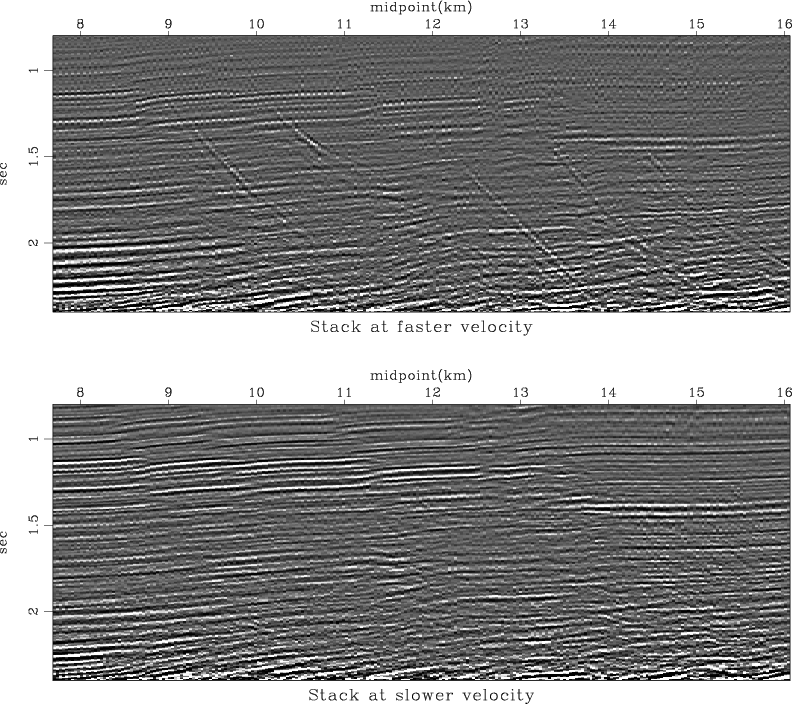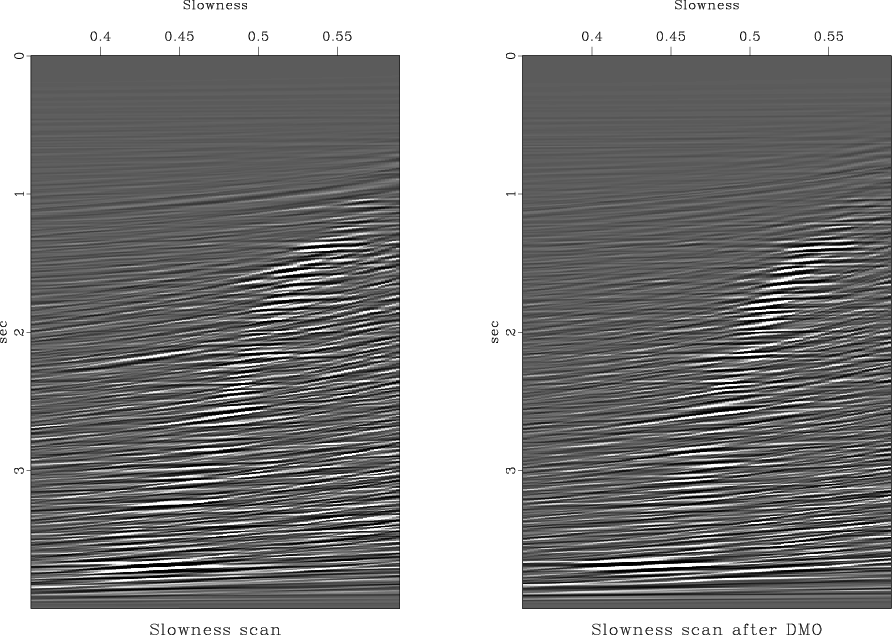|
|
|
|
Dip and offset together |
Recall the Gulf of Mexico dataset presented in chapter ![]() .
We did a reasonably careful job of NMO velocity analysis
in order to produce the stack shown in Figure
.
We did a reasonably careful job of NMO velocity analysis
in order to produce the stack shown in Figure ![]() .
But is this the best possible stack?
To begin to answer this question, Figure 8.14 shows
some constant-velocity stacks of this dataset done with subroutine
velsimp()
.
But is this the best possible stack?
To begin to answer this question, Figure 8.14 shows
some constant-velocity stacks of this dataset done with subroutine
velsimp() ![]() .
This figure clearly shows that
there are some very steeply-dipping reflections
that are missing in Figure
.
This figure clearly shows that
there are some very steeply-dipping reflections
that are missing in Figure ![]() .
These steep reflections appear only when the NMO velocity
is quite high compared with the velocity
that does a good job on the horizontal reflectors.
This phenomenon is consistent with
the predictions of equation (8.12),
which says that dipping events
require a higher NMO velocity than nearby horizontal events.
.
These steep reflections appear only when the NMO velocity
is quite high compared with the velocity
that does a good job on the horizontal reflectors.
This phenomenon is consistent with
the predictions of equation (8.12),
which says that dipping events
require a higher NMO velocity than nearby horizontal events.

|
|---|
|
cvstacks
Figure 14. Stacks of Gulf of Mexico data with two different constant NMO velocities. Press button to see a movie in which each frame is a stack with a different constant velocity. |
|
|
Another way of seeing the same conflict in the data
is to look at a velocity-analysis panel
at a single common-midpoint location
such as the panel shown in Figure 8.15
made by subroutine velsimp() ![]() .
In this figure it is easy to see that the velocity
which is good for the dipping event at 1.5 sec is too high
for the horizontal events in its vicinity.
.
In this figure it is easy to see that the velocity
which is good for the dipping event at 1.5 sec is too high
for the horizontal events in its vicinity.
|
velscan
Figure 15. Velocity analysis panel of one of the panels in Figure 8.14 before (left) and after (right) DMO. Before DMO, at 2.2 sec you can notice two values of slowness, the main branch at .5 sec/km, and another at .4 sec/km. The faster velocity |

|
|---|---|
|
|
|
|
|
|
Dip and offset together |